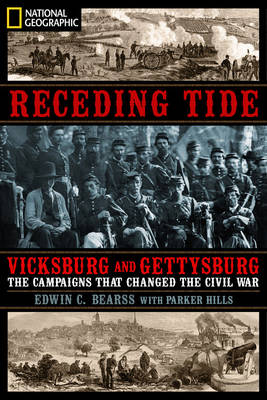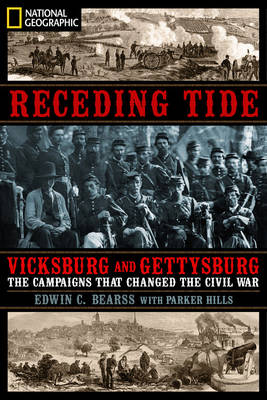
- Afhalen na 1 uur in een winkel met voorraad
- Gratis thuislevering in België vanaf € 30
- Ruim aanbod met 7 miljoen producten
- Afhalen na 1 uur in een winkel met voorraad
- Gratis thuislevering in België vanaf € 30
- Ruim aanbod met 7 miljoen producten
Zoeken
Receding Tide
Vicksburg and Gettysburg: The Campaigns That Changed the Civil War
Edwin C Bearss, J Parker Hills
Hardcover | Engels
€ 39,45
+ 78 punten
Omschrijving
It's a poignant irony in American history that on Independence Day, 1863, not one but two pivotal Civil War battles ended in Union victory, marked the high tide of Confederate military fortune, and ultimately doomed the South's effort at secession. But on July 4, 1863, after six months of siege, Ulysses Grant's Union army finally took Vicksburg and the Confederate west. On the very same day, Robert E. Lee was in Pennsylvania, parrying the threat to Vicksburg with a daring push north to Gettysburg. For two days the battle had raged; on the next, July 4, 1863, Pickett's Charge was thrown back, a magnificently brave but fruitless assault, and the fate of the Confederacy was sealed, though nearly two more years of bitter fighting remained until the war came to an end. In Receding Tide, Edwin Cole Bearss draws from his popular Civil War battlefield tours to chronicle these two widely separated but simultaneous clashes and their dramatic conclusion. As the recognized expert on both Vicksburg and Gettysburg, Bearss tells the fascinating story of this single momentous day in our country's history, offering his readers narratives, maps, illustrations, characteristic wit, dramatic new insights and unerringly intimate knowledge of terrain, tactics, and the colorful personalities of America's citizen soldiers, Northern and Southern alike.
Specificaties
Betrokkenen
- Auteur(s):
- Uitgeverij:
Inhoud
- Aantal bladzijden:
- 400
- Taal:
- Engels
Eigenschappen
- Productcode (EAN):
- 9781426205101
- Verschijningsdatum:
- 18/05/2010
- Uitvoering:
- Hardcover
- Formaat:
- Ongenaaid / garenloos gebonden
- Afmetingen:
- 163 mm x 236 mm
- Gewicht:
- 625 g

Alleen bij Standaard Boekhandel
+ 78 punten op je klantenkaart van Standaard Boekhandel
Beoordelingen
We publiceren alleen reviews die voldoen aan de voorwaarden voor reviews. Bekijk onze voorwaarden voor reviews.








